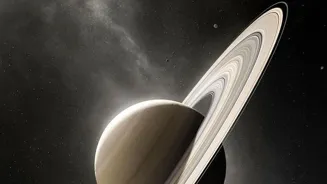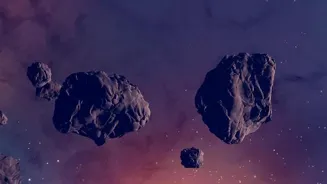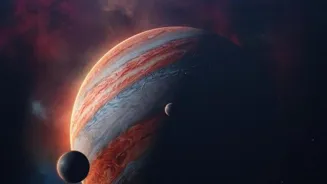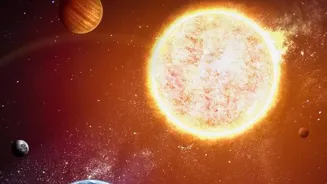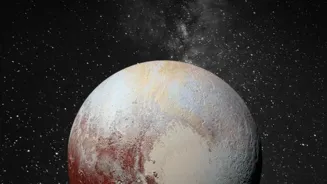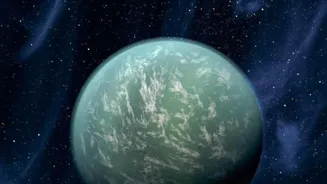Unravel Saturn's Enigmatic Rings: A Cosmic Masterpiece Full of Surprises! Dive into the mysteries and marvels of Saturn's iconic rings
Saturn, the jewel of our solar system, is famous for its magnificent
rings. These rings are not solid structures,but composed of countless icy particles, dust and rocks, all orbiting the planet. For centuries, these rings have captivated scientists and sky watchers.
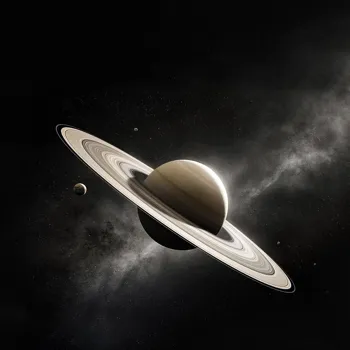
So, let us explore ten astonishing facts about Saturn's rings that reveal their beauty and complexity.
Saturn's rings: icy bits, wide span, thin layers, celestial beauty
First off, it’s vital to know the composition. While we observe them as solid discs from far away, the rings are basically icy bits, ranging from the size of a grain of sand to houses! These icy particles are coated with other materials, such as dust and various chemicals.
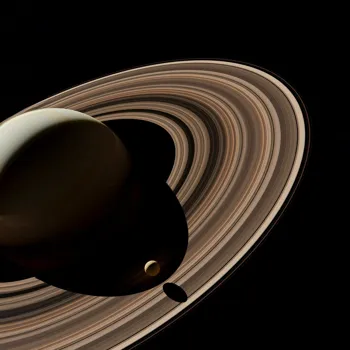
Secondly, the rings are incredibly wide. From one edge to the other, the ring system spans hundreds of thousands of kilometers. But get this, even with all that massive length, they're thin. Very thin. Most rings are only about 10 meters thick.
This difference in the width and thickness is quite remarkable, making them seem like delicate, celestial artworks. It’s like a sheet of paper stretched across the vastness of space. The speed of the particles is also different, with ones closer to Saturn moving faster than the ones further away.
Particles around Saturn move at varying speeds, shaping its rings
Speaking of speed, these particles are not static; they move around Saturn! Imagine thousands, may be millions of icy comets traveling together. They're pulled by Saturn's gravity, and their speed changes depending on their distance from the planet.
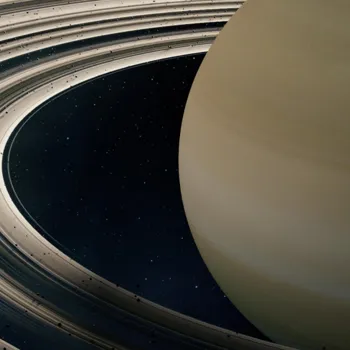
Particles closer to Saturn go around faster than those further away. What's more, these objects are constantly rubbing and colliding with each other, in a slow motion spectacle. The collisions help reshape the appearance of the rings.
The gravity of Saturn and its many moons affect the rings,creating gaps and structures. For the most part, rings are made up of nearly pure water ice, and other compositions too. Much of the ice has a thin coating of silicates and organic material.
Saturn’s rings are a testament to the ongoing changes that occur in our solar system.
Gaps in Saturn's rings formed by moons, some shepherded for sharp edges
Third, we need to know about the gaps in the rings. Some of the gaps, like the Cassini Division, are clearly observed quite easily, even through a telescope. Scientists believe that the gaps are created by the gravitational effect of Saturn's moons.
These moons clear out particles that would normally be in that area, forming gaps. Also, some of the rings are "shepherded" by small moons that confine the ring particles. It's like the moons are rounding up the ring particles, keeping them in line.
This shepherding effect is crucial for maintaining the sharp edges of some of the rings. The Cassini Division is huge, measuring a whopping 4,800 kilometers in width, that could easily fit Earth!
The rings even cast shadows on Saturn’s atmosphere, which can create breathtaking visuals when viewed from space probes.
Rings of Saturn display colorful variations, aiding scientific study
Fourth, let's look at the colours! While the rings appear whitish from a distance, they're actually a mix of many colours. Different areas of the rings have distinct compositions and sizes of particles, that can change depending on the light reflecting off them.
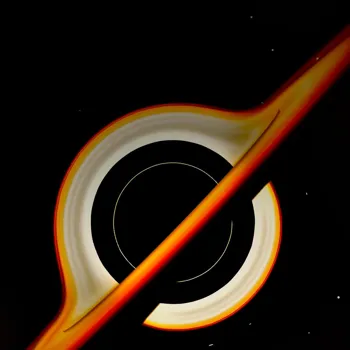
Some parts might look reddish, while others could be blueish. These colour differences help scientists learn more about what the rings are made of and their origin. Also, the colour variations are not constant; they change over time.
This variation is affected by solar radiation and micrometeoroid impacts. It is not one solid mass, hence the colours vary.. Colour variations act like a fingerprint and can reveal a lot about the nature of materials and how they have been affected by external environments.
Debate on Saturn's rings age, possibly younger than believed, formed from celestial breakup
Now, about how old the rings are! This is one big debate and the subject of ongoing research. Earlier, scientists had thought that the rings were formed along with Saturn, potentially billions of years ago.
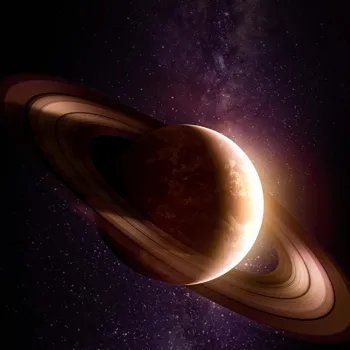
But, recent studies, especially data from NASA's Cassini mission, suggest that the rings might be much younger, maybe only a few hundred million years old! This would indicate that the rings are relatively recent. One idea is that they formed from the breakup of a moon or a large comet.
The young age of the rings also raises questions about their brightness and stability. The debate on the age of Saturn's rings shows us how much there is left to discover about our solar system. It also highlights the continuous evolution of these celestial wonders.
Saturn's rings have dynamic, spoke-like structures influenced by magnetic fields
Lastly, there is a strange and interesting fact about the rings. They have spokes running throughout. These spokes can be made of micrometre sized particles and appear dark or bright when viewed from certain angles.
The electrical charges from Saturn's magnetic field, influences them by levitating them above the rings. These spoke like structure are not fixed; they come and go. They change with Saturn's seasons. Scientists also believe that these spokes appear when Saturn is closer to the Sun.
The fact that the rings are related to the planets magnetic field only shows how everything in space is tied together. The dynamic nature of the spokes is a reminder that Saturn's rings are not just a beautiful backdrop. They are a hub of energetic processes.
